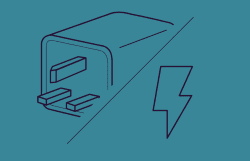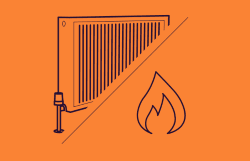One energy solution that has been gaining popularity in recent years is the use of microgrids for energy management. Microgrids are essentially self-contained, small-scale power systems that can operate independently or in parallel with the main grid. They are becoming increasingly popular for businesses looking to take control of their energy supply, reduce their carbon footprint, and increase their energy resilience.
The concept of microgrids is not entirely new, but advancements in technology and the growing demand for sustainable and reliable energy have made them more viable and appealing than ever before. As a broker, I have seen first-hand the benefits that microgrids can provide to businesses across the UK. From reducing energy costs to improving power quality and reliability, microgrids offer a range of advantages that are hard to ignore.
At the heart of the microgrid concept is the ability to integrate a variety of energy sources and storage options, including renewable energy sources such as solar and wind power. This allows businesses to take advantage of local resources and reduce their reliance on traditional energy sources. With the right planning and design, microgrids can also provide energy security and resilience in the face of power outages or other disruptions.
How do microgrids work?
Well, let me put it this way: microgrids are like a little energy ecosystem that’s self-sufficient and self-reliant. They’re like the energy version of a tiny house – small but mighty!
Here’s how it works: a microgrid is made up of a combination of energy sources, like solar panels, wind turbines, and generators. These energy sources are then connected to a local energy grid, which can be isolated from the larger electrical grid if needed.
But what really makes microgrids unique is their ability to manage energy storage and distribution on a local level. This means that instead of relying on a centralised energy supplier, like a big utility company, the energy is produced and consumed right there in the local area. This allows for greater energy independence, reduced energy waste, and increased resilience in the event of power outages or other disruptions.
And don’t worry – just because microgrids are small doesn’t mean they’re not powerful. In fact, they can often generate enough energy to power an entire community! Plus, because they rely on renewable energy sources like solar and wind, they’re a great way to reduce carbon emissions and promote sustainability.
Of course, every microgrid is unique, and the specifics of how it works will depend on the specific energy sources and infrastructure involved. But no matter what, the key takeaway is that microgrids are a way to take control of your energy supply and create a more sustainable and resilient future. So if you’re interested in exploring the world of microgrids, give us a call.
What Technologies make up Microgrids?
There’s a whole range of technologies that can be used to make up a microgrid. Think of it like a buffet of energy options – you get to pick and choose what works best for your specific needs.
At the heart of any microgrid is an energy storage system. This can be in the form of batteries, flywheels, or even compressed air storage. The storage system is what allows a microgrid to function independently of the larger electrical grid, by storing excess energy generated during periods of low demand and releasing it during periods of high demand.
But of course, you need energy sources to fill up that storage system! Solar panels are a popular option, as they can be installed on rooftops or other surfaces to capture the energy of the sun. Wind turbines are another option, particularly in areas with consistent wind patterns. And if you’re in an area without reliable access to renewable energy sources, you can always use a traditional generator powered by fossil fuels as a backup.
Of course, all of these technologies need to be connected together and managed to create a functional microgrid. That’s where the microgrid controller comes in – it’s the brains of the operation, monitoring energy supply and demand and making sure everything is running smoothly.
But perhaps the most exciting part of microgrid technology is the potential for innovation and experimentation. With so many different technologies available, there’s always the possibility of discovering new and more efficient ways to generate, store, and distribute energy. And who knows – maybe someday we’ll be powering our homes with a combination of solar panels, wind turbines, and hamster wheels! (Okay, maybe not that last one.)
What are the benefits of microgrids?
Where to begin? Well, for starters, microgrids offer increased resilience and reliability of the power system. They can operate autonomously in the event of a power outage, keeping the lights on and the machines running. Plus, by generating and distributing power locally, microgrids reduce the strain on the main power grid, leading to fewer blackouts and brownouts.
But that’s not all! Microgrids also bring environmental benefits. By integrating renewable energy sources like solar and wind power, microgrids can drastically reduce carbon emissions and contribute to a cleaner, greener future. And because microgrids can be tailored to the specific needs of a community or business, they can provide more efficient energy usage and cost savings.
Speaking of cost savings, microgrids can also help businesses and communities manage their energy costs and reduce their reliance on expensive grid electricity. By generating power on-site, businesses can avoid high transmission and distribution charges and even sell excess power back to the grid.
And let’s not forget about the increased control and flexibility that microgrids provide. With the ability to monitor and manage energy usage in real-time, businesses can optimize their energy systems and respond quickly to changes in demand or supply. It’s the ultimate power trip!
What is new about microgrids?
Well, the technology has been around for a while, but it’s only recently gained traction as a viable solution for managing our energy needs. As we become more conscious of our impact on the environment and more reliant on technology, microgrids offer a way to meet our energy needs in a sustainable and efficient way.
One exciting development in the world of microgrids is the increasing use of advanced control systems and software. These systems allow microgrids to better integrate with the main power grid, while also managing the complex interactions between different energy sources and loads.
Another new aspect of microgrids is the rise of community-based microgrids. These microgrids are being developed by communities and businesses to meet their specific energy needs, often in collaboration with local utilities. This approach to energy management allows for greater local control and can result in more efficient and cost-effective energy usage.
And let’s not forget about the continued development of new technologies that are making microgrids more effective and efficient than ever before. From advanced battery storage systems to smart inverters and energy management software, the possibilities for microgrid innovation are endless.
Overall, what’s new about microgrids is their growing popularity and the increasing recognition of their potential to transform the way we manage our energy needs. As we continue to develop and refine these systems, we can look forward to a more sustainable, efficient, and reliable energy future.
What are the challenges facing microgrids?
Microgrids may seem like a panacea to all our energy woes, but they come with their fair share of challenges. The biggest one is integration. We are dealing with a highly complex system that requires several technologies to work seamlessly together. Integrating distributed energy resources like solar panels and wind turbines is no easy feat. They require intelligent control systems that can balance the supply and demand of energy in real-time.
Another challenge is the cost. Setting up a microgrid can be a significant investment. For instance, if you’re setting up a microgrid in a remote area, you’ll have to consider the cost of laying out transmission lines and installing the necessary equipment. While the long-term benefits of a microgrid are clear, many organisations are hesitant to make such a significant investment.
Another issue is the lack of clear regulation. With the rapidly changing energy landscape, regulatory bodies are still trying to play catch-up. Microgrids operate outside the traditional energy system, which makes it difficult to define their role and responsibilities. There is also the question of ownership. Who owns the microgrid, and who is responsible for its maintenance and upkeep?
Lastly, there is the issue of cybersecurity. As microgrids become more prevalent, they become a target for cybercriminals. A successful cyber attack could cause widespread power outages, leading to significant economic losses. We need to ensure that our microgrids are secure and resilient to cyber threats.
Why are more UK businesses are turning to microgrids for energy resilience?
Well, first of all, let me say that it’s not surprising that more and more UK businesses are turning to microgrids. With the unpredictable nature of the energy market and the ever-increasing demand for reliable and affordable power, microgrids are quickly becoming the go-to solution for businesses looking to achieve energy resilience.
One of the key reasons for this shift is the fact that microgrids can provide businesses with a level of control over their energy supply that was previously unimaginable. By generating and distributing their own power, businesses can reduce their reliance on the grid and avoid the risk of power outages and blackouts.
Another reason is that microgrids can offer significant cost savings in the long run. By generating their own power, businesses can avoid the rising costs of grid electricity, especially during peak demand periods. This can be particularly attractive for businesses that require a lot of energy to operate, such as factories, data centres and hospitals.
Furthermore, with the increasing focus on reducing carbon emissions, microgrids can help businesses to achieve their sustainability goals by enabling them to generate their own renewable energy. By integrating technologies such as solar panels, wind turbines and battery storage systems into their microgrid, businesses can reduce their reliance on fossil fuels and significantly lower their carbon footprint.
Finally, as we mentioned earlier, microgrids can offer businesses a greater degree of energy security and resilience. By providing businesses with a reliable and stable power source, microgrids can help to mitigate the risks associated with power outages, especially in critical industries such as healthcare and finance.
All in all, it’s clear that microgrids are a game-changer for UK businesses looking to take control of their energy supply and future-proof their operations.
What is the difference between the normal grid and a smart grid?
The difference between a normal grid and a smart grid is like the difference between a bicycle and a Ferrari.
You see, the normal grid is like a good old bicycle. It gets the job done, but it’s not very efficient, and it’s not very smart. It’s a one-way street, and the power flows in one direction only, from the power plant to your home or business. The normal grid is not very flexible, and it can’t handle fluctuations in supply and demand very well.
On the other hand, the smart grid is like a high-performance Ferrari. It’s fast, it’s efficient, and it’s smart. It’s a two-way street, and the power can flow in both directions. The smart grid can adjust to changes in supply and demand in real-time, thanks to advanced sensors and communication technologies.
In a smart grid, homes and businesses can generate their own electricity through renewable energy sources, like solar panels or wind turbines. They can also store the excess energy in batteries or sell it back to the grid. This two-way flow of power creates a more flexible and resilient energy system.
In summary, the normal grid is like a bicycle, while the smart grid is like a Ferrari. The smart grid is more flexible, efficient, and can handle fluctuations in supply and demand better than the normal grid.




